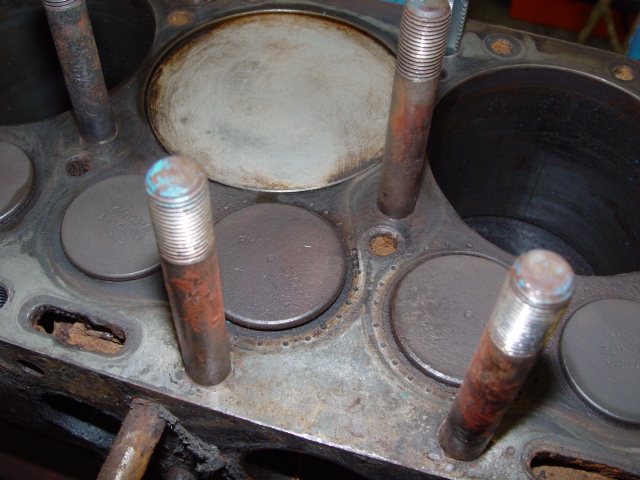|
| Author |
Message |
    
busboy
New member
Username: busboy
Post Number: 1
Registered: 12-2015
| | Posted on Tuesday, December 01, 2015 - 08:26 am: | 




|
Need help diagnosing engine issue
I have a 1958 Chris Craft with KFL model engine
It has been sitting for who knows how long
The previous owner told me he once rolled it over, it backfired and that is as far as he got
I hooked it to a battery it rolled 4-5 times (it has been drained of fuel) I was confirming that it was not seized
The next day I was attempting to do a compression test and it would not roll over
I removed the starter and it rolls(slow)
I could roll the engine by the flywheel so far in either direction and it stops solid
I removed the head and some of the valves move some are stuck open or closed
the pistons move freely, no scoring on the cylinder walls no clunking etc
Not sure what to do next?
By the way, I am not a mechanic!
This is just a retirement hobby!!
I appreciate any and all advice
Thanks in advance
Joe |
    
ldobbins
Senior Member
Username: ldobbins
Post Number: 190
Registered: 12-2002
| | Posted on Tuesday, December 01, 2015 - 03:45 pm: | 




|
Greetings Joe,
The KFL was most likely put away not having been pickled. These engine need to be fogged with a proper lubricant that coats all internal parts in the combustion path.
I use a 50-50 mixture of Marvel Mystery Oil and solvent (old School). This is sprayed into the carb, or carbs in the case of a KFL, while running and after it is to an operating temperature. This will allow the engine to start smoking as it is burning the oil and will drown it out. This allows both intake and exhaust valves, valve guides etc to be oiled for storage.
From what you are saying, I take it that you have some heavy sludge or rust preventing the valves from sliding in their guides. Some penetrating oil, shot down at the stem through an open valve, may help.
The sulfur and zinc have been almost completely removed form both our fuels and engine oil. These were used for lubrication and were critical in a flat head/flat tappet engine such as our marine flat heads.
30 Wt oil is recommended for your engine and needs to have an additive such as ZDDP or similar. Hardened exhaust valve seats are also recommended for long engine life but not as critical as the oil additive. This additive will aid in valve guide lubrication.
There are also some good synthetic single viscosity marine oils that are highly recommended for aiding in the protection and operation of these engines. Read up on them first as the engine oil is also used as the lubricant of the transmission (reverse gear) clutch plates (forward) and planetary gears and drum band (reverse). Some multi grade oils may not allow the trans to work as designed.
Good luck and keep us posted n your progress. You have a good engine in a late 50s KFL.
Cheers,
Lew |
    
busboy
New member
Username: busboy
Post Number: 2
Registered: 12-2015
| | Posted on Tuesday, December 01, 2015 - 07:24 pm: | 




|
Thank you Lew
from the overall looks I suspect you are right on the money and it was not stored properly
After 2 days of soaking penetrating oil the valves are now all moving!
I sprayed them some more while rotating the motor with the flywheel
Plan on doing that for a few days then
pull the inspection plates to check for any damage
Thanks for the oil information. I will need that!
I suspect I will have to pull the valves and polish them along with the seats
Thanks again
Joe |
    
ldobbins
Senior Member
Username: ldobbins
Post Number: 192
Registered: 12-2002
| | Posted on Tuesday, December 01, 2015 - 08:01 pm: | 




|
Hi Joe,
If you are going to go through the time to pull the valves, check to see if the exhaust seats are inserts. If so, they were most likely replaced with hardened valve seats for long life with today's fuels. Without our tetra ethyl lead, all engines benefit life wise by having hardened seats installed.
Here is a picture of an older rebuild of a Chris Craft M engine. You can see the replacement valve seats by the ring in the block just past the edge of the valve. This was an older or questionable installation as the block was center-punched in order to disrupt the block shape to hold the seats in better. Usually an .008" interference fit is used when installing Stellite valve seats. In other words, the seat is .008" bigger or larger diameter than the hole cut in the block. The seats are usually frozen, read shrunk, then pressed or tapped into place. These in the pic are intake valves but you get the idea.
Keep us posted!
Cheers,
Lew
 |
|
|
|


|


